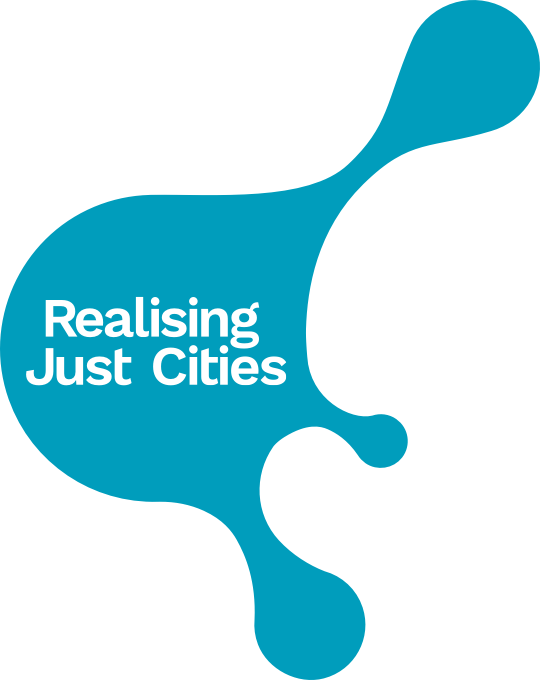Comparing perspectives on urban food: debates and site visits at the 2018 Realising Just Cities conference in Cape Town
Authors: Charlie Spring & Nick Taylor Buck, 21st November 2018
A panel of researchers, practitioners and city policy-makers from South Africa, Sweden, Kenya and the UK shared perspectives on urban food system challenges and change at Mistra Urban Futures’ recent ‘Comparative Co-production’ conference. Comparing across global north and south contexts, however blurred that dichotomy, is always challenging, so panellists were asked to respond to a series of questions designed to tease out commonalities and differences between our diverse city homes.
One question was whether food poverty is normalised in our cities, prompting discussions of why access to food, a fundamental human right, is not more frequently the subject of protest and public rage. Explanations included the shame of being unable to afford a decent diet, the ability to sacrifice costlier, nutritionally-rich foods for cheap, filling staples; and the way rapid social change can render what is ‘normal’ unclear and less accountable. Hunger, then, becomes expressed as factors that may not be immediately apparent or attributed to food insecurity: stunted growth, lowered learning potential and reduced economic productivity. In Kenya, the replacement of subsistence farming for monocultures such as sugar cane position food poverty as the outcome of structural changes in food production and commerce.
Another question asked whether food value chains are more resilient when local. Debate emerged over the value of prioritising local food production as a response to climate change and resource depletion, when globalised food chains can offer cheaper prices for those at risk of hunger. It was argued that a realistic strategy for poorer households is to diversify sources of food regardless of where that food is sourced from, and that larger farmers, rather than smallholders, may be better equipped to adapt to climate change. Focusing on local production, it was argued, promotes a ‘productivist’ approach to food insecurity where emphasis is on the quantity of food produced rather than the power dynamics of how that food is distributed. Conversely, another panellist argued that long supply chains and monopolies deplete resilience and contribute pollutants and emissions that threaten longer-term survival of all. These contrasting perspectives emerge, in part, from the different city contexts: in Cape Town, the ‘informal’ sector is a major player in food access, possibly due to a lack of cohesion between regulatory and governance systems, while UK and Swedish cities have greater integration of state and market due to strong regulatory and governance structures afforded by a robust tax base.
A further topic of discussion centred on whether using the food system as a lens could assist in urbanising the UN Sustainable Development Goals (SDGs). It was argued that the SDGs are currently presented as a set of 17 discrete and independent ‘boxes’ that can be addressed without reference to each other. This is clearly at odds with the aim of the SDGs to promote greater integration and transdisciplinarity. It was suggested that this is where food - the very definition of a cross-cutting agenda – could help. Food it is something everyone can relate to in their daily lives, and may therefore provide an entry point to the SDGs for people and organisations who might not otherwise engage. Many of the SDGs have a strong crossover with food and are relevant to urban areas, as exemplified by the outline mapping of SDGs in Sheffield, which showed that 9 of the 17 SDGs have a direct link both to the food system and to existing local strategies.
Other topics of discussion were the utility and transferability of food system ‘tropes’ like food deserts, supermarketisation and ‘urban food security’ itself, and questions from the room about the value of public kitchens, food sovereignty and acknowledging ‘informality’ in planning. These enabled discussion of the broader conference theme of participation and inclusion of diverse city inhabitants in decision-making around how food is produced, distributed and regulated in cities. Power differentials that too often characterise participatory efforts were acknowledged, while seeking common languages to articulate problems and solutions.
A visit to the 2,000 hectare Philippi Horticulture Site exemplified some of the power dynamics and contestations over land use in relation to food in Cape Town. Its history is one of colonialism, fragmented governance and basic livelihood struggles, and there are divergent views of the area within, and between, city and regional government and policy makers, NGOs and farmers. According to our guides, its farmers include the descendants of German refugees to the Cape as well as those whose land was apportioned under post-Apartheid land reform. Philippi sits atop the Cape Flats Aquifer, a vital water resource in light of recent severe drought, and produces significant amounts of food for the city while employing around 2000 people. Despite this inherent value, significant housing need in the region means there is increasing pressure to use Philippi land for low-income housing, and the site is being gradually eroded by development.
Topology and materiality (winds buffered by dykes, pale and silica-rich sands) play a visceral role in the contingencies of how the place has been and continues to be shaped. Indeed, the strong winds during our visit were a stark contrast to the sheltered gentility of the Kirstenbosch Botanical Garden where colonialists including Cecil Rhodes enjoyed very different kinds of green spaces. Both sites highlighted the politicised, more-than-human metabolisms that produce, and at times destabilise, urban space.




